We know that everyone makes mistakes, even big companies with thousands of employees. In this article, I will talk about 10 of the worst marketing disasters in human history. If you like to learn from other people’s mistakes, you will probably enjoy this post.
If you skim through these, you’ll find companies that did it better, along with tips in avoiding the disasters themselves.
#10. KFC- We’ll Eat Your Fingers Off!
When KFC first presented its product in Beijing in 1987, the famous phrase “Finger-Lickin’ Good” had translated in Chinese to “We’ll eat your fingers off.”
The lesson
When changing markets, it’s essential to adopt a cultural/social sensitivity. In terms of expanding markets, this sensitivity would mean considering the culture or language of your new market.
On the contrary, companies like Disney have a history of maintaining a positive global image, creating for themselves the term “Disneyfication,” with locations all over Europe and Asia.
Maintain Cultural/Social Sensitivity
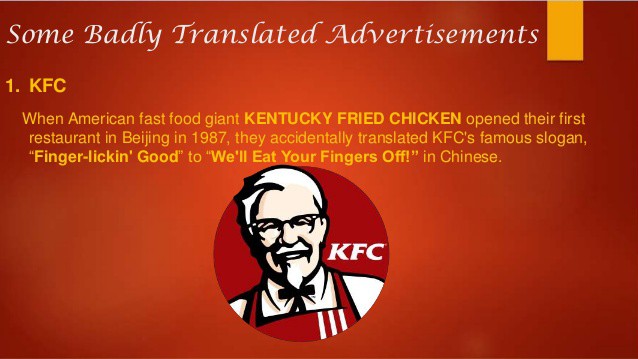
#9. The Boring Ford EDSEL
Ford Motor Company created an overly dramatic marketing hype in 1957 for their new mystery car, the EDSEL. Dealers were required to keep the model out of sight to generate excitement.
Still, car buyers were not impressed when it came out by its lack of improvement from other ford products.
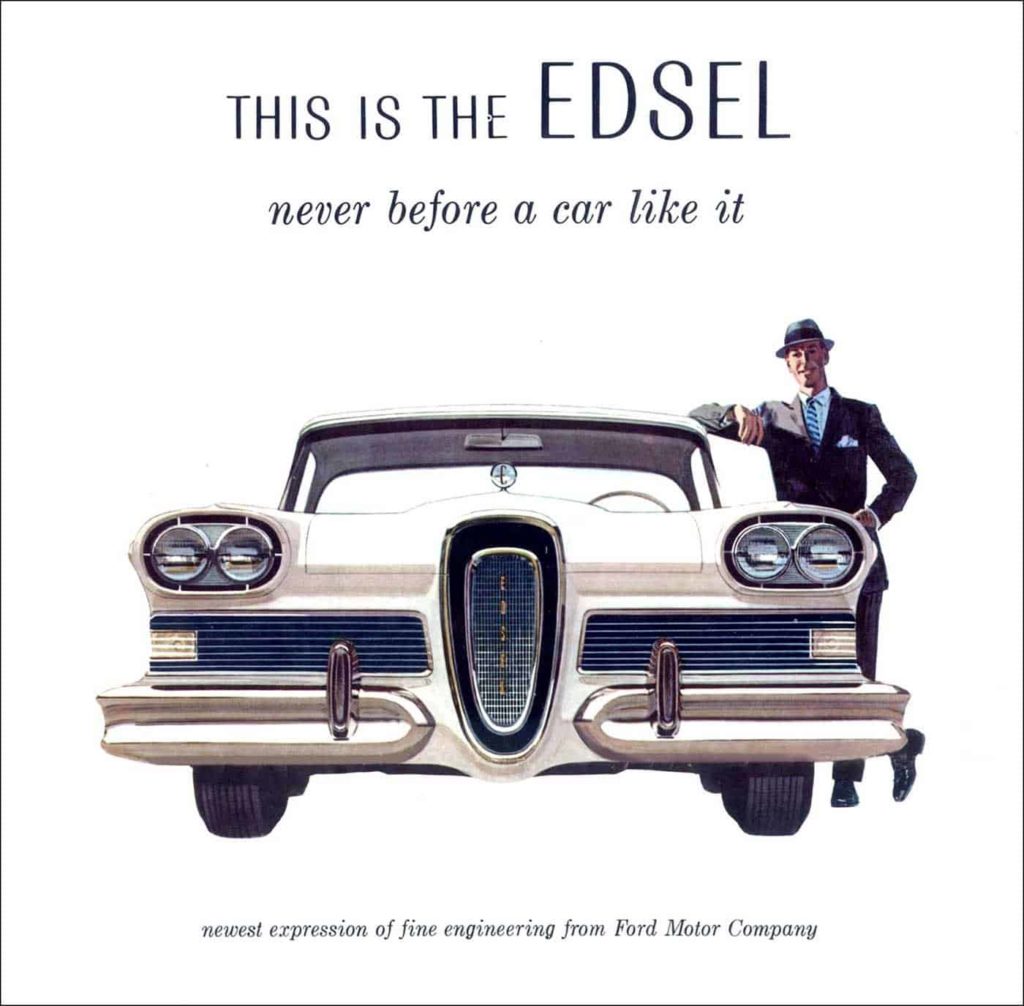
The fundamental problem was that the Edsel was competing against other Ford vehicles, matching the retail value of many other cars in Ford’s Mercury line without offering anything new or different to customers.
According to United Press International, the book value of Ford’s EDSEL model had declined by $400 million, failing to bring a new car model to consumers. The Ford Edsel eventually cost the company that made it hundreds of millions of dollars between 1958 and 1960.
The lesson
Always offer new and exciting products to consumers. Launching a product with few differences is a lazy option that likely won’t keep your customers happy.
Companies like Samsung are constantly launching products with the newest, most advanced features they can think of. The launch of the Galaxy S4 is proof of that, selling 10 million in the first month. This is 20 days less than it took for the Galaxy S.I.I.I….. to reach that amount in sales.
Continuously Launch New Products with Energy and Confidence
#8. McDonald’s: Gold Medal for Lack of Campaign Preparation
During the 1984 Olympics, McDonald’s had attempted to patriotically increase sales by introducing a system where every U.S… medal earned meant a free meal for the U.S. citizens based on an estimate of goals from the previous Olympics. Little did the marketing team at McDonald’s know that the U.S. would be rich in medals, costing them a substantial amount of money.
If the Americans won a gold, silver, or bronze medal in that event, the customer would get a free Big Mac, fries, or Coke, depending on the award. McDonald’s marketing team probably looked at the US medal count from the last games the US team participated in, in 1976.
In that year, the U.S. won 94 medals, 34 of them gold. After all, the Soviets and their allies dominated the games every time (in 1976, Russia won 125 awards, and East Germany won 90, with 40 gold medals).

However, the U.S. didn’t participate in the 1980 Olympics since the Olympics were held in Moscow, and the U.S. boycotted the games.
But that should have been a cue for McDonald’s — since the 1984 games were being held in the U.S., the U.S.S.R. and friends returned the favor and boycotted.
Instead of the 34 golds, the U.S. succeeded in 1976; the 1984 games saw the Americans bring home 83. With the Eastern Bloc competition out of the way, the U.S. wound up winning significantly more medals as the last time around — a mind-boggling 174 medals total.
Which meant McDonald’s had to give away much more food than they expected, including more than twice as many valuable Big Macs.
The lesson
It’s good to give your customers something back, but make sure you’re able to deliver your promises fully. Don’t offer customers free merchandise without first considering the possibility that your investment might skyrocket into an expense.
Prepare for the Worst.
#7. American Apparel Appears to Objectify Women
Many inconsiderate tactics have come from companies like American Apparel, which have been criticized for disgracing young female models in their ads. This type of advertising style had resulted in many protests at specific American Apparel locations.
Many successful companies make an effort to maintain a socially responsible image among their customers. This can win you respect and admiration from them.
According to Maclean’s, T.D… Bank was in the top 50 for Most Socially Responsible Corporations. They had aimed to make women make up at least 35% of its executive team by 2011. They did this by becoming carbon neutral and part of the United Nations Principles for Responsible Investment.
According to their financial reports, because of these responsible initiatives, T.D.’s.. corporate responsibility had resulted in a 7% increase in total revenue from 2011 – 2012.
Be Social Responsibility
#6. GAP Angered Their Customers
In 2010, When GAP changed its logo without considering its customer opinion, its sales immediately dropped by 2%.
According to BBC, After less than one week, it has been consigned to the graveyard inhabited by rejected arrows, squiggles, and inadvertently offensive corporate emblems.
The clean font, with a slight blue square overlapping the “P,” prompted such an outcry that the U.S. clothing firm initially enlisted the public’s help in rethinking the design.
But within days, it announced, early on Tuesday morning, it was returning to the solid blue box and “GAP” written in a capitalized serif font, a look introduced 20 years ago.
The lesson
Resources like Twitter and Facebook are valuable tools in communicating with your customers. If the GAP had used their resources in getting a customer’s opinion on the new logo change, they could have avoided their sales losses.
Companies like Starbucks or JetBlue have used social media like Twitter to communicate with and get opinions from their customers. It’s no wonder Starbucks has reduced its general costs from 37.08% to 35.38%.
#5. Fiat Love Letters
Back in 1994, the carmaker Fiat attempted an amorous ad campaign to engage its Spanish customers. The company sent out 50,000 anonymous love letters to young women in Spain. The letters were addressed anonymously and written on pink paper.
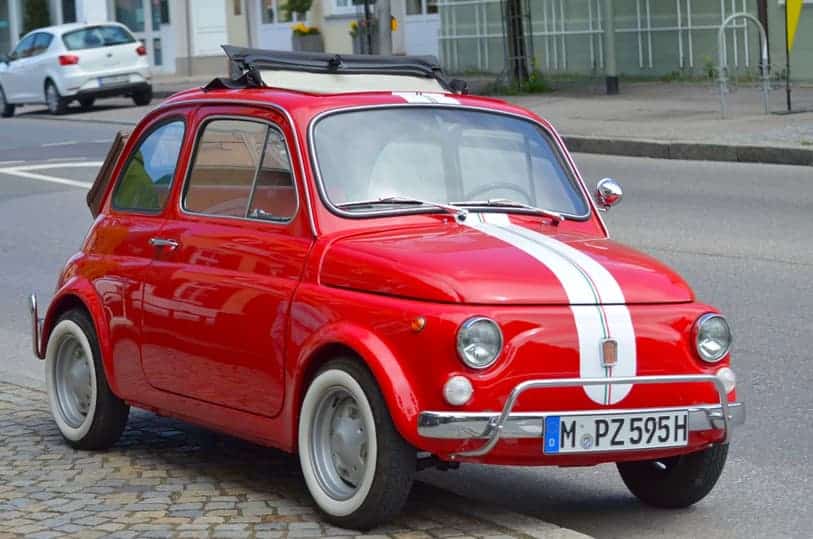
As the Chicago Tribune reported at the time, the letters bathed their recipients in compliments. They invited them to indulge in a “little adventure” after “we met again on the street yesterday, and I noticed how you glanced interestedly in my direction.”
The idea was to resolve the identity of the letter sender four or five days later, at which point a second letter would declare the writer to be the Fiat Cinquecento.
The problem was, the campaign backfired before the second letter could be sent out. Instead of drumming up curiosity, it led to panic and fear that someone was stalking these women.
The Lesson
Just don’t be creepy. Attitudes toward romance and sexuality have evolved and changed for the better in recent years. Creating a sense of unease or even dread amongst your customers will win you any points.
#4. Coca Cola: The new Coke that people hated
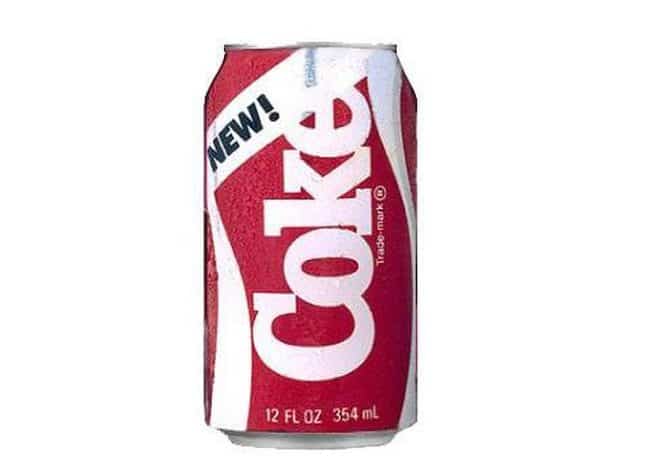
In 1975, Pepsi launched its “Pepsi Challenge” contest, wherein volunteers would take a blind taste test of two different sodas and say which one they preferred. The results of the tests tended to show that most people in the United States chose the taste of Pepsi over rival Coca-Cola. The campaign resulted in higher sales for Pepsi.
In 1985, the company threw out its classic formula, introduced a new product named New Coke, and halted production of the original recipe the same week.

The backlash was nearly instantaneous, and Coke’s sales dropped off significantly. This led to company executives announcing a short time later, at a July 11 press conference in the same year, that they would return to the original and beloved formula.
Millions of dollars were poured into the research and development of flavor, marketing research, analysis, and advertising. But that wasn’t enough to convince people that something new was necessarily better.
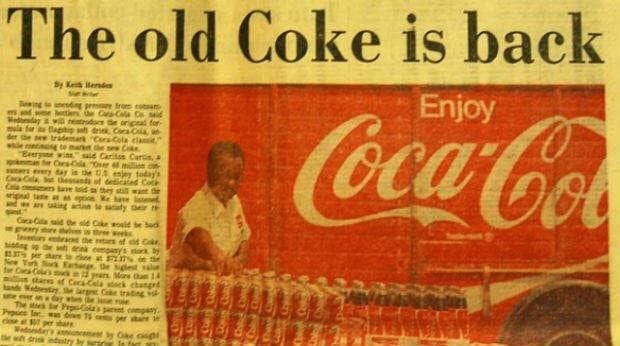
One of the more reliable sources about what happened is Dan Keough, who worked for an executive at Coca-Cola for many years and, as the company points out, was involved in many pivotal events during his career with the company.
One of those instances was the rollout of New Coke. Looking back on the incident, Keough had some interesting insights.
“Most leaders of American companies begin to get a sense of infallibility and never want to admit a mistake. If you look at the annual reports of companies, except for Warren Buffett’s Berkshire Hathaway, everything is always perfect; no one ever made a mistake,” he said.
So, perhaps the most important lesson here is that if you make a mistake, you should own up to it, admit you were wrong and correct your error.
Coca-Cola underestimated the emotional bond people had with their product. The old Coke was with them for almost 100 years at that point, it created a lot of memories, and when the company was trying to take away, the customers felt like a part of their memories was being taken away.
#3. Pepsi’s Billion-Dollar Giveaway

In the early ’90s, Pepsi was lagging behind Coca-Cola in foreign markets. So, in an attempt to make headway in Southeast Asia, Pepsi’s Filipino executives put their heads together and came up with an ingenious marketing plan: give away millions of pesos.
Their brainchild was dubbed “Number Fever,” and Filipinos were encouraged to purchase Pepsi in hopes of finding a bottle cap with the winning three-digit code. One lucky winner would receive 1 million pesos (about $40,000 U.S.), with countless others winning second prizes, such as free drinks.
The campaign was an instant smash: Pepsi’s sales shot up nearly 40 percent, and its executives expanded the number of prizes to over 1,500 and kept the contest rolling for an extra five weeks.
When the contest was over, it was estimated that more than half of the Philippines’ population of 63 million people had participated. Number Fever was an enormous success, and all that was left was for Pepsi to announce the winner.
Well, specific numbers were not to be selected as the winner; specifically, the number 349, seeing as how it happened to be printed on 800,000 bottle caps. But the consulting firm hired to draw the winning number didn’t get the memo, and when their computer chose the winning number, it selected … wait for it … 349. and thousands upon thousands of satisfied Filipinos came forward to claim their million pesos.
Unwilling to pay out the billions of dollars in prize money they technically owed, Pepsi told the winners that the caps didn’t contain the correct security code. The Philippines went absolutely apeshit.
Rioters threw bombs and Molotov cocktails at Pepsi bottling plants, overturned and set fire to Pepsi delivery trucks, and sent troves of Pepsi executives hightailing it out of the country. Pepsi was slapped with thousands of lawsuits.
In the end, Pepsi’s budgeted $2 million in prize payouts quickly sprouted into over $10 million in restitution and legal fees — an expensive lesson that Pepsi wouldn’t have had to learn if only they’d learned it the first time when an earlier Number Fever promotion in Chile ended in a similar public outcry after shitty fax resulted in the wrong winning number being released to the public.
#2. Hoover: Promotion that ends in $83 million loss
At the end of 1992, Hoover had a lot of washing machines and vacuum cleaners lying around, and they didn’t know what to do with them.
So they were trying to come up with a plan to get rid of them. They ran a campaign that gave away two round-trip plane tickets to the U.S. or Europe with every vacuum purchased. Although the company hoped that customers would be more inclined to buy expensive models, it set its minimum purchase to receive that ticket at £100, or roughly $166 today.

As soon as people saw the ad, they flocked to buy Hoover products, and now, Hoover doesn’t have enough vacuum cleaners to sell nor the money to pay for the plane tickets for their patrons.
This resulted in people buying cheap vacuum models to get airline tickets. Some even bought more than one vacuum, but many of these people never received the promised tickets. They started taking Hoover to court in the US and UK; the impending legal battles for Hoover did not end for another six years. In the end, Hoover lost approximately £50 million, or roughly $83 million today.
The lesson
Sweepstakes and giveaways are effective promotional strategies, but sometimes companies offer more than they can handle. They overestimate or underestimate their audience’s interest, make unrealistic offers, or fall victim to bad timing.
In any case, companies should learn that when it comes to marketing, it’s possible to be too generous in their greedy rampage to attract customers.
#1. Electrolux: Nothing sucks like an Electrolux
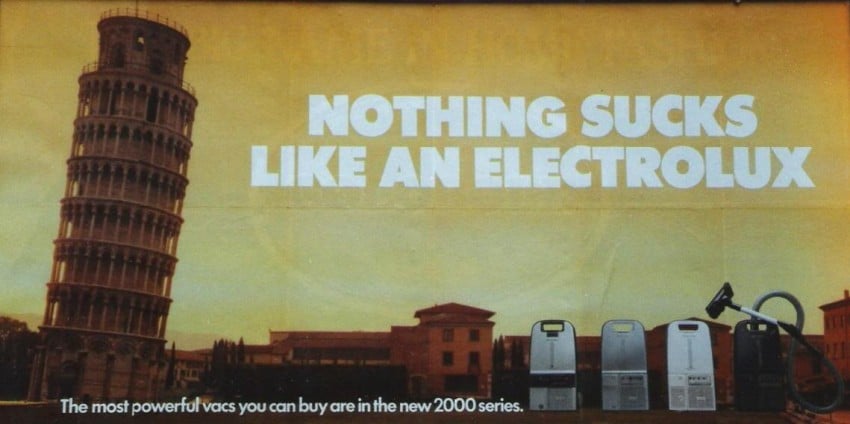
In 1960, a Swedish electric appliance company Electrolux was eager to launch its vacuum cleaners into the western market.
They hired an ad agency called “Cogent Elliot,” a creative director named “Mike Fox,” who thought it was a good idea to use a pun in the ad.
So they went with it.
The problem was in the old days, the pun didn’t work so well, and the ad was the butt of many jokes for a long time.
Now that I think of it, the ad could have worked well if it had been published in 2019.
Conclusion
Even after these greatest disasters, these brands are doing well because they have learned from their mistakes. That is what every human being and all businesses should do.
Don’t repeat your mistake. Learn from them and keep improving. And always remember that every failure is a door to a new opportunity or idea.

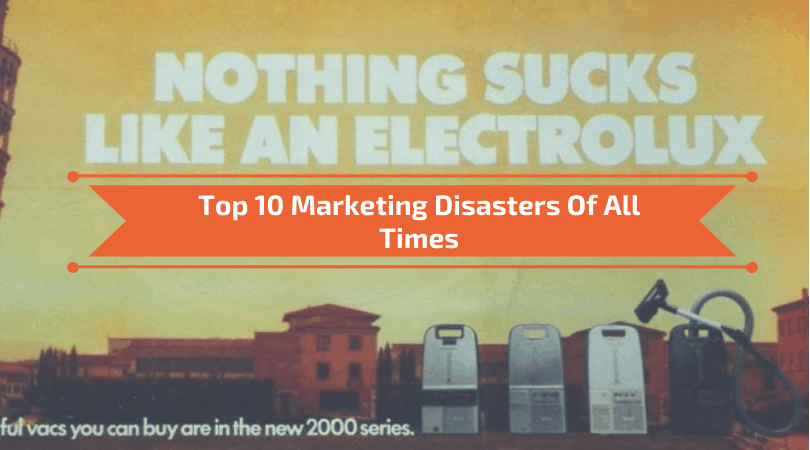

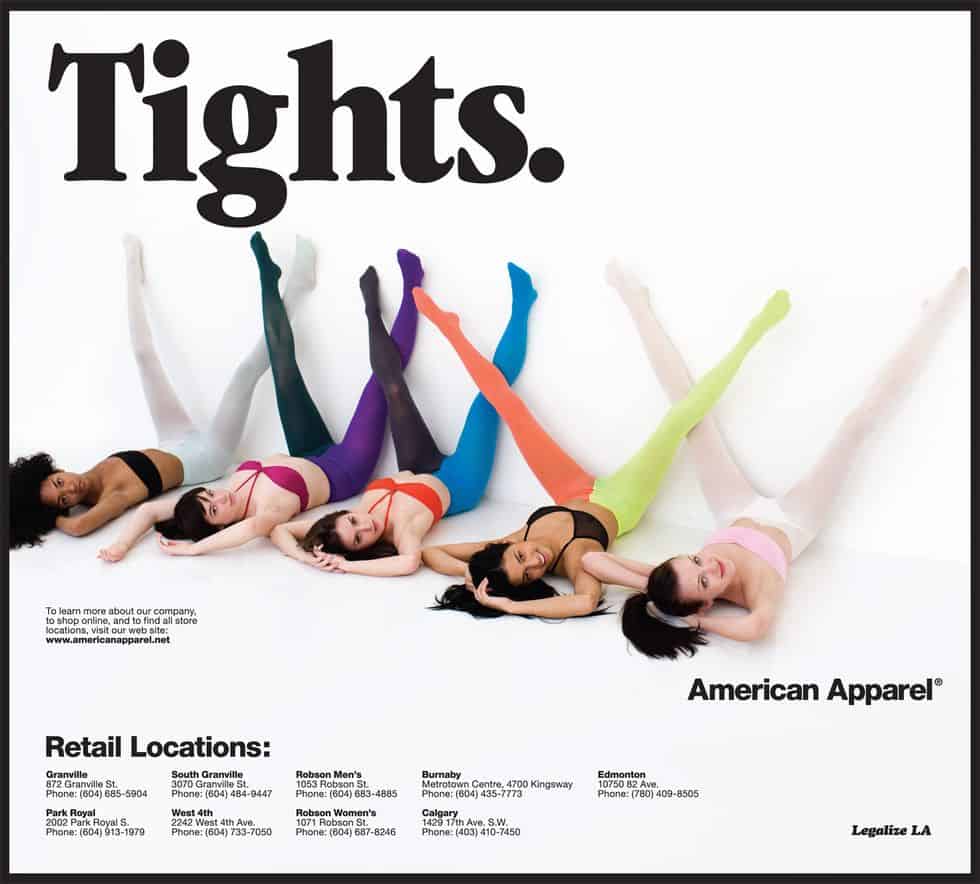
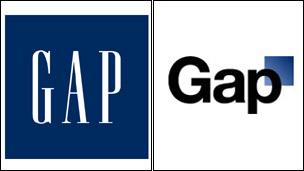
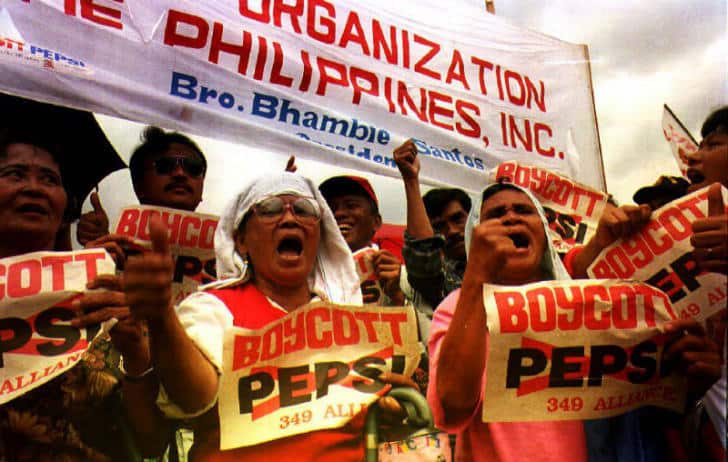
![What Is SEM? [Paid Search Guide]](https://competico.com/wp-content/uploads/2022/07/What-Is-SEM-300x167.png)



